
|
What do Bats Look Like? |
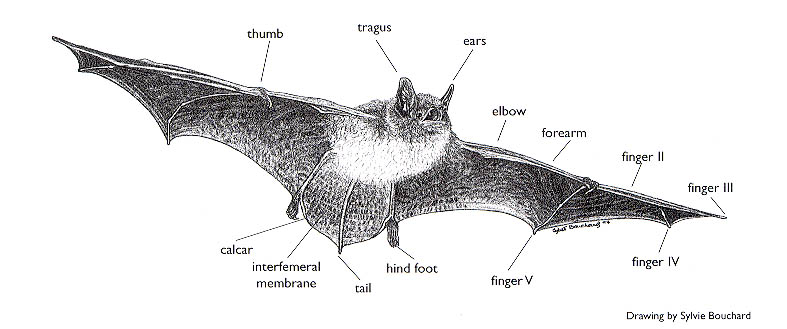
A major misconception about bats is that they are blind, an idea that originated from the fact that microbats have very small eyes. They orientate instead by listening to echoes as they bounce off surrounding objects, a process called 'echolocation'.
Bats are not exactly renowned for their beauty. Some microbat species
have complex noseleaves, folds, or wrinkles on their muzzles, which are used to direct their
echolocation calls.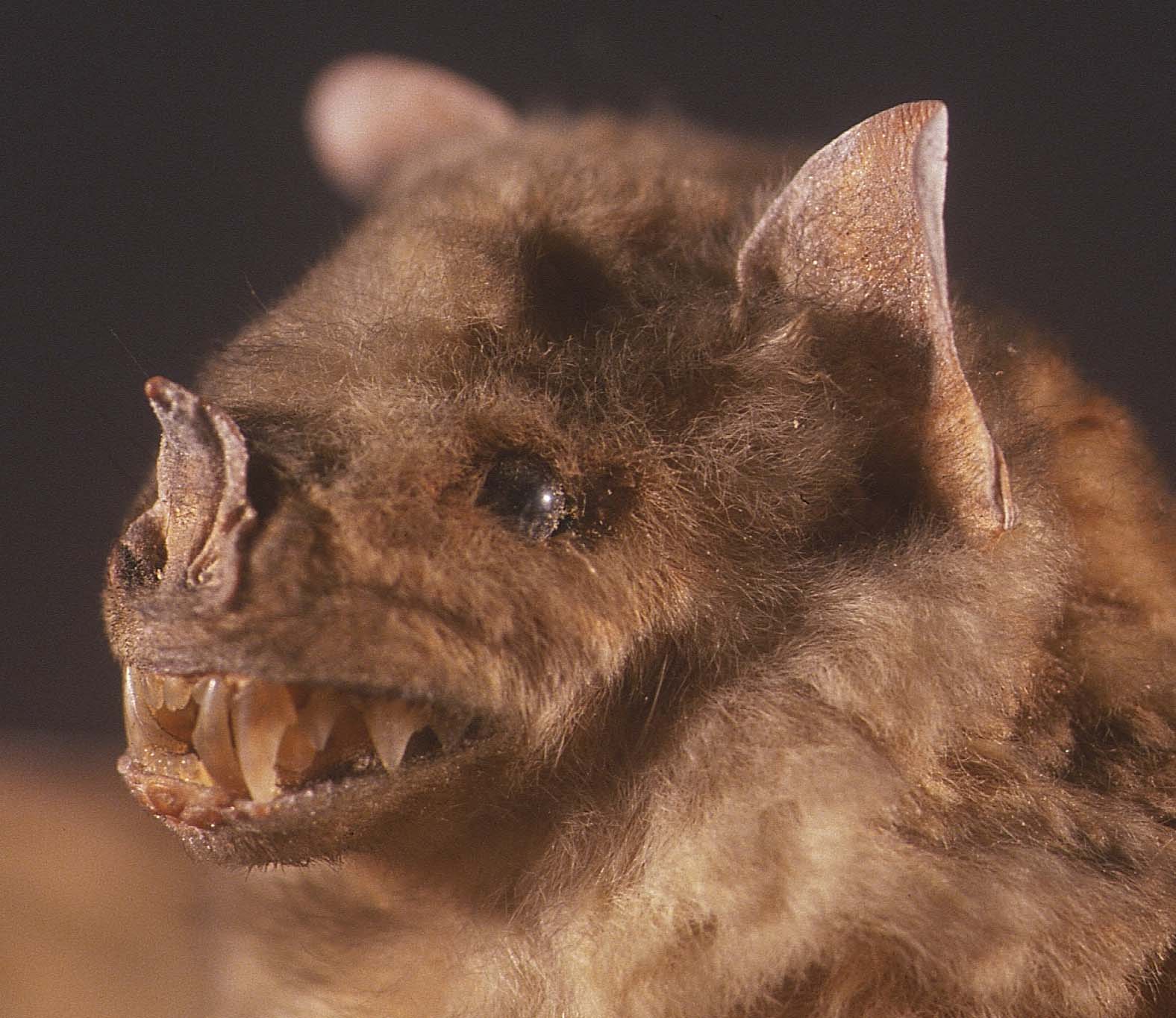
A Spear-nosed microbat (Phyllostomus lilium) |
The ears range from small and round to large and pointed, and often have a cartilaginous fold (tragus) present at the notch of the ear regions.3. 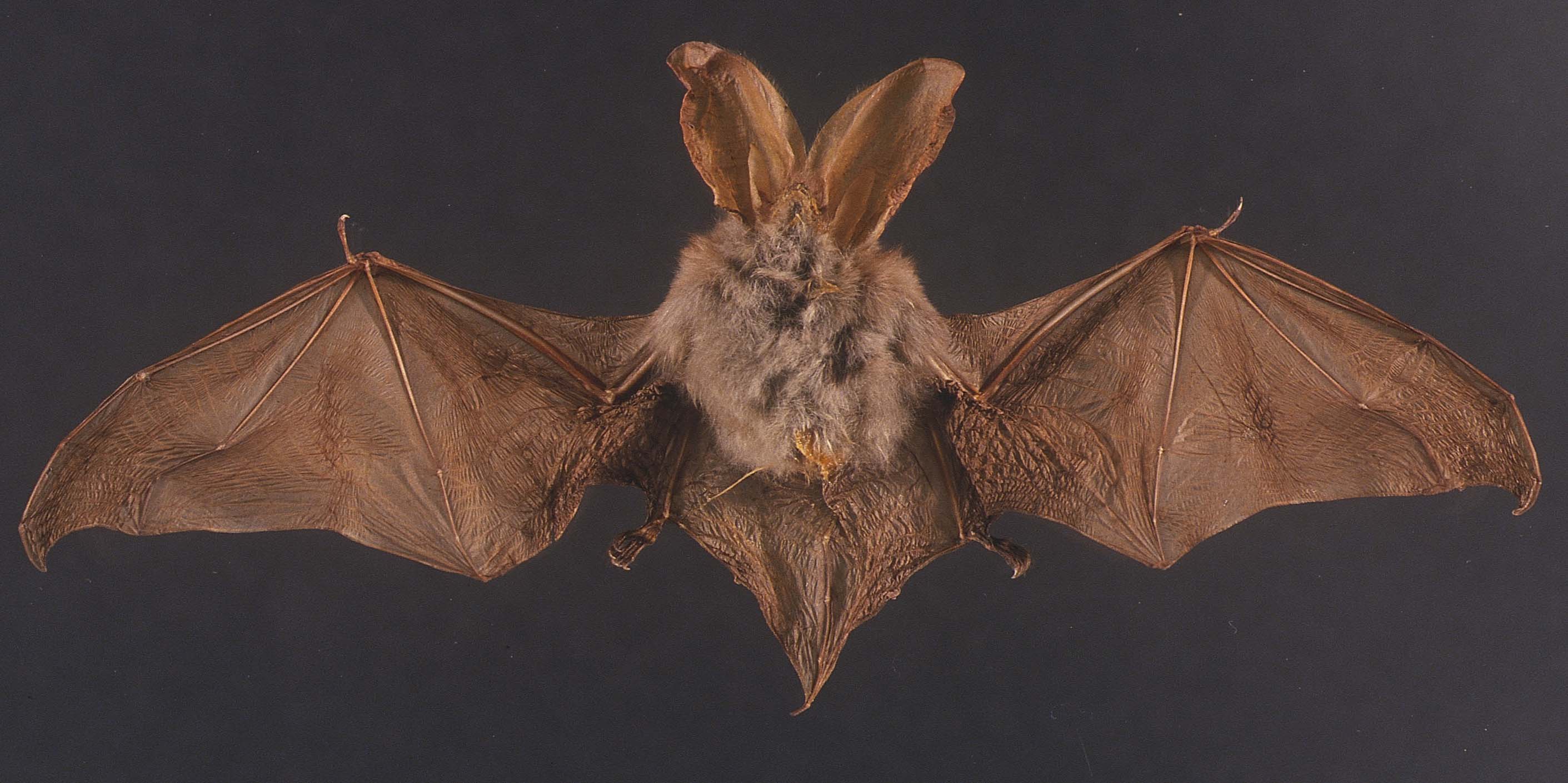
A Long-eared microbat (Plecotus auritus) |
Megabats, on the other hand, have large and complex eyes - the expression "as blind as a bat" does not apply to fruitbats! Notice how this megabat (Pteropus species) has a longer muzzle than the microbats shown above, giving it a truly fox-like appearance and the common name "flying fox".These fruitbats also have very long and strong thumbs with curved thumbnails like claws, which they use for climbing around in trees and gripping fruit2.
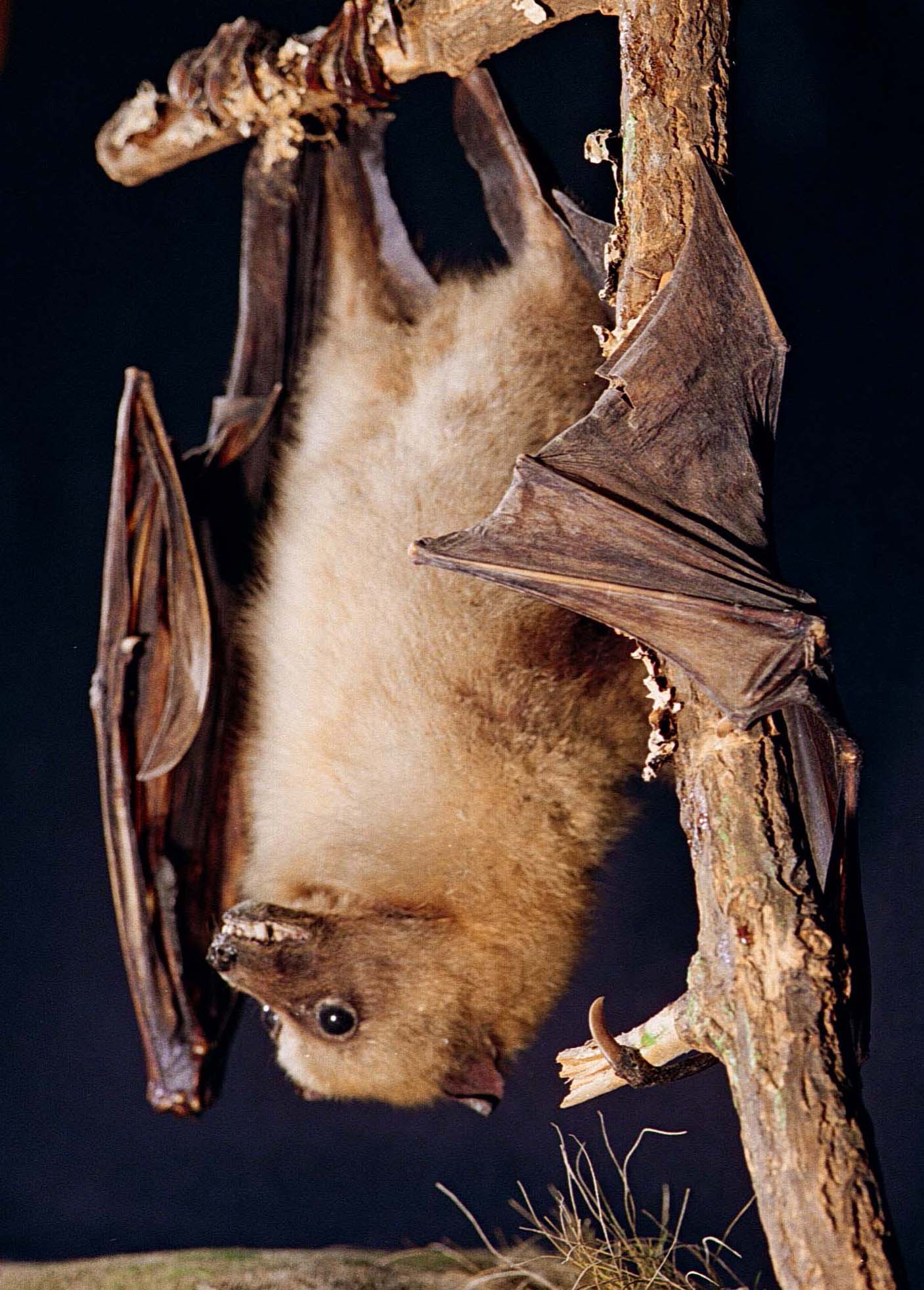 Pteropus megabat |
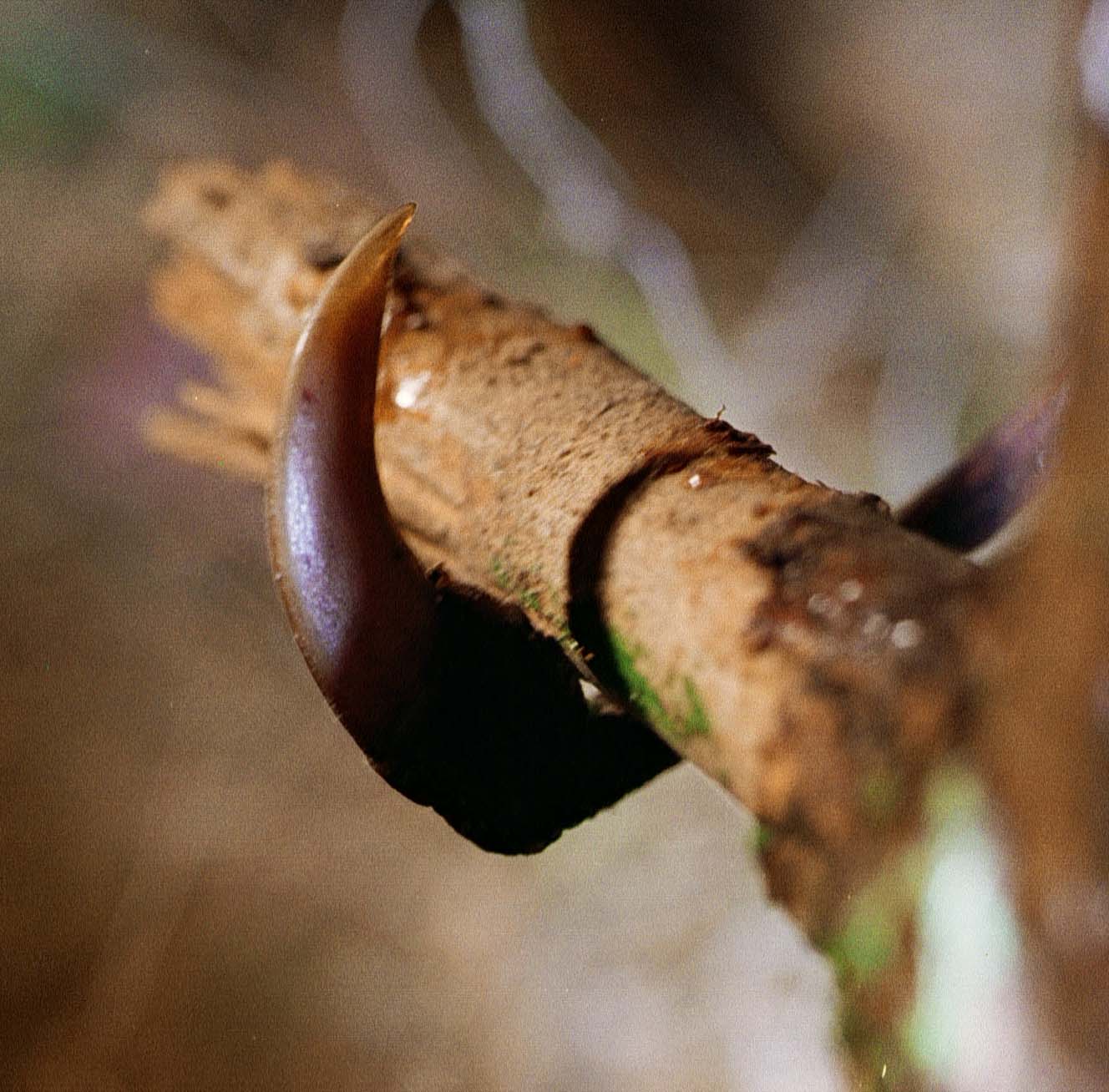 ..and his claw |
 Pteropus poliocephalus |
Bat fingers have the same number of bones ours do, but they are proportionately much longer.
Look at your fingers and forearm; try to fold your fingers down against your arm, and
imagine your fingers extending past your elbow. But don't forget to leave your thumb
extending forward for gripping and climbing!
When bats extend their fingers, their wings are ready for flight. By shaping their 'hands'
they control their flight path. Morphological changes associated with the evolution of flight have had a profound effect on the roosting habits of bats. For example, the hind limbs of most bats have been rotated 90° from the position typical to terrestrial mammals, such that the foot and its claw point backwards. This makes hanging upside down possible. |







